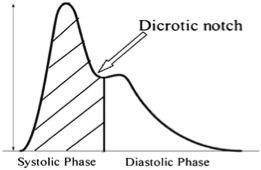The parameters of the Capstesia app are described.
After taking a photo of the arterial waveform on the monitor screen, and cropping it to the signal of interest, the picture is sent to the Capstesia server via a mobile Internet connection. The heart rate and systolic and diastolic arterial pressures are manually entered into the app to determine the cardiac output (CO). After a few seconds, the PPV and CO values (PPVCAP and COCAP) are displayed on the smartphone interface.
PPV%= 100 x (PPmax – PPmin)/[(PPmax+PPmin)/2].


The Capstesia app is available on the Android store.
After taking a photo of the arterial waveform on the monitor screen, and cropping it to the signal of interest, the picture is sent to the Capstesia server via a mobile Internet connection. The heart rate and systolic and diastolic arterial pressures are manually entered into the app to determine the cardiac output (CO). After a few seconds, the PPV and CO values (PPVCAP and COCAP) are displayed on the smartphone interface.
- PPV(% ): across each complete screen, is calculated using the following formula:
PPV%= 100 x (PPmax – PPmin)/[(PPmax+PPmin)/2].

- CO (l/min): SV x HR.

- max dP/dt : The maximum slope of the pressure curve was calculated using the curve formed by 20 points detected from the minimum of one curve (diastolic blood pressure) to the maximum (systolic blood pressure) of the next curve and taking the mean of the values obtained from all the waves analysed.
- Barrachina Larraza B, Alvarez Guerras O, Lopez‑Picado A (2014) Capstesia, a new APP for advanced hemodynamic monitoring.Rev Esp Anestesiol Reanim;61:535‑6.
- Desebbe O, Joosten A, Suehiro K, Lahham S, Essiet M, Rinehart J et al. (2016) A novel mobile phone application for pulse pressure variation monitoring based on feature extraction technology: a method comparison study in a simulated environment. Anesth Analg.;123:105-13.
- Shah SB, Hariharan U, Bhargava AK (2016) Capstesia™: The Smart hemodynamic monitor! Trend Anaesth Crit Care;10:15‑9.
- Michard F (2016) Hemodynamic monitoring in the era of digital health. Ann Intensive Care, 6:15.
- Iglesias-Posadilla D, Gómez-Marcos V, Hernández-Tejedor A (2017) Apps y medicina intensiva. Medicina Intensiva, 41(4):227-236.
- Santiago López J, León Ramírez V et al. (2018) Concordancia en la medición del gasto cardiaco. Vigileo vs. Capstesia. Rev Med Inst Mex Seguro Soc, 56(2):136-42.
- Shagun Bhatia Shah, Ajay Kumar Bhargava, Uma Hariharan et al. (2018) Cardiac output monitoring: a comparative prospective observational study of the conventional cardiac output monitor Vigileo™ and the new smartphone‑based application Capstesia™. Ind Jour of Anaesth, 62: 584–91.
- Joosten A, Boudart C, Vincent JL et al. (2018) Ability of a new smartphone pulse pressure variation and cardiac output application to predict fluid responsiveness in patients undergoing cardiac surgery. Anesth Analg 2018 (ahead of print.)
- Sarah Saxena, Alexandre Joosten, Bernd Saugel, Jean-Louis Vincent, et al. Monitoring of pulse pressure variation using a new smartphone application. A clinical decision-making study in patients undergoing major abdominal surgery using invasively assessed stroke volume variation as the reference. (Pending publication)
- Michard F., Barrachina B. and Schoettker P. Intensive Care Med 2018. Ahead of print.
The Capstesia app is available on the Android store.







